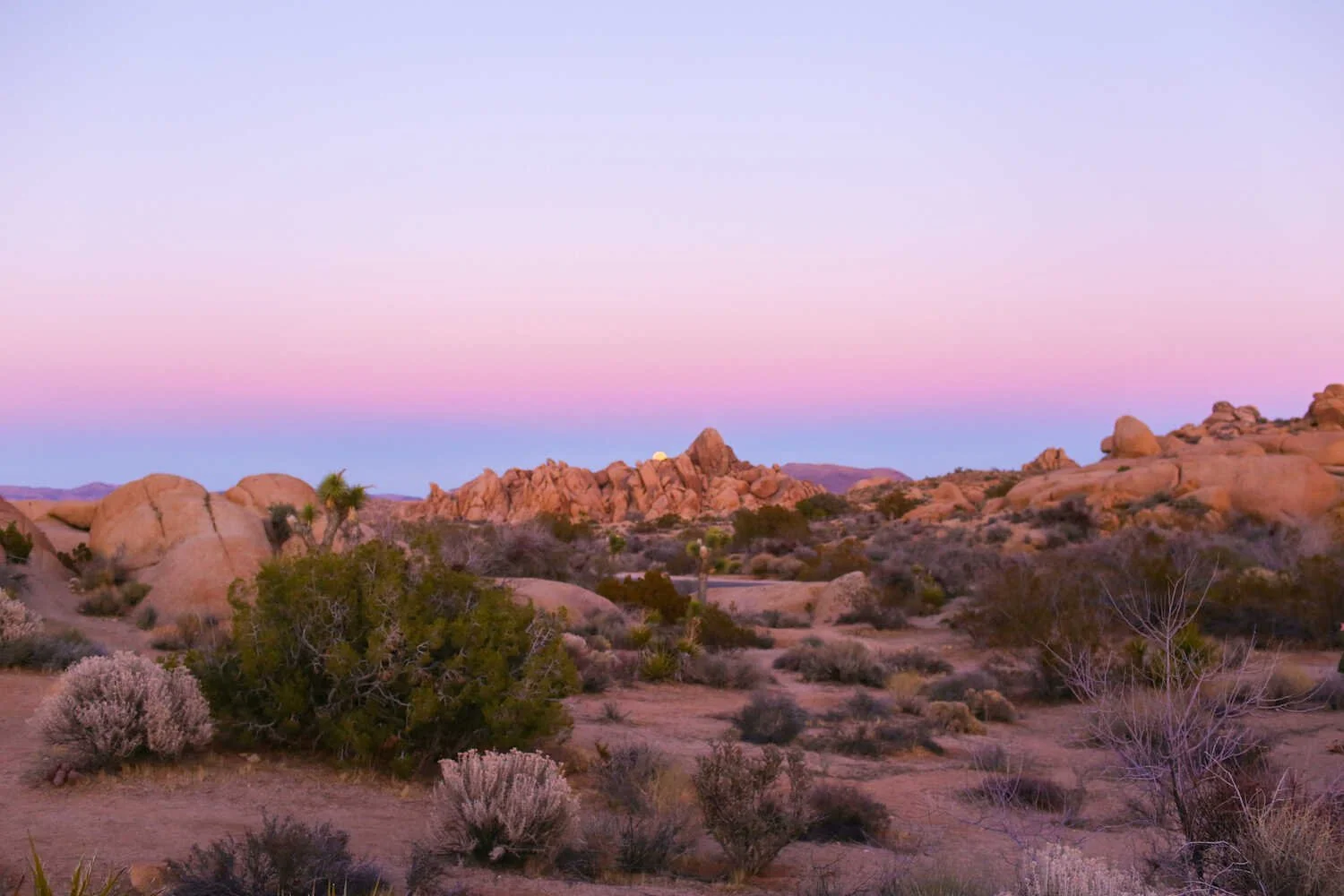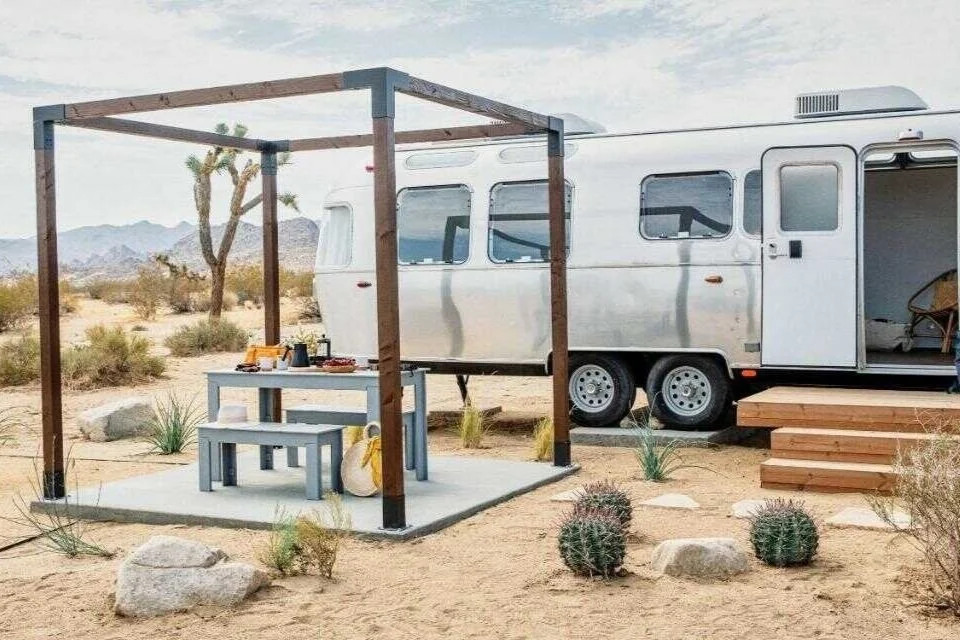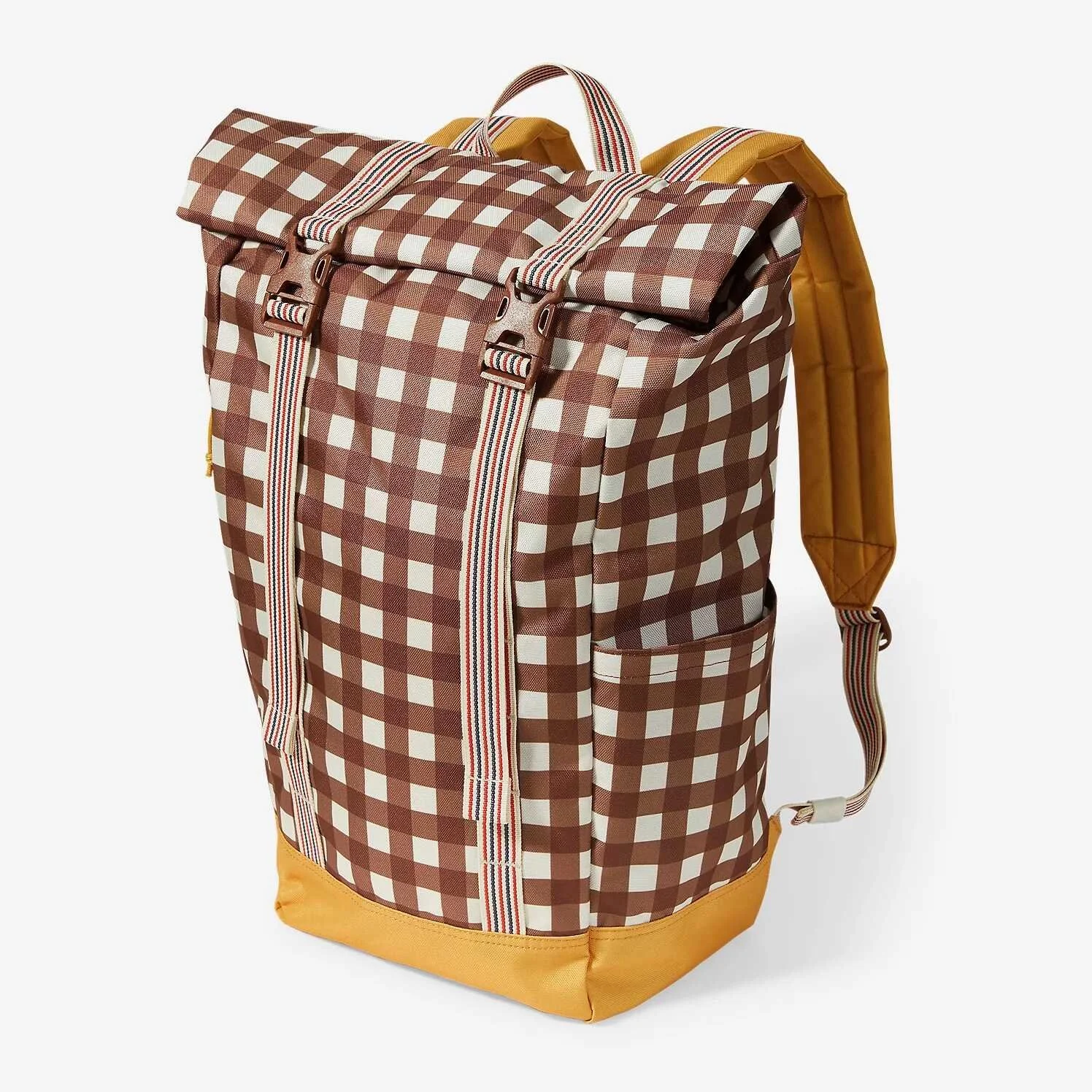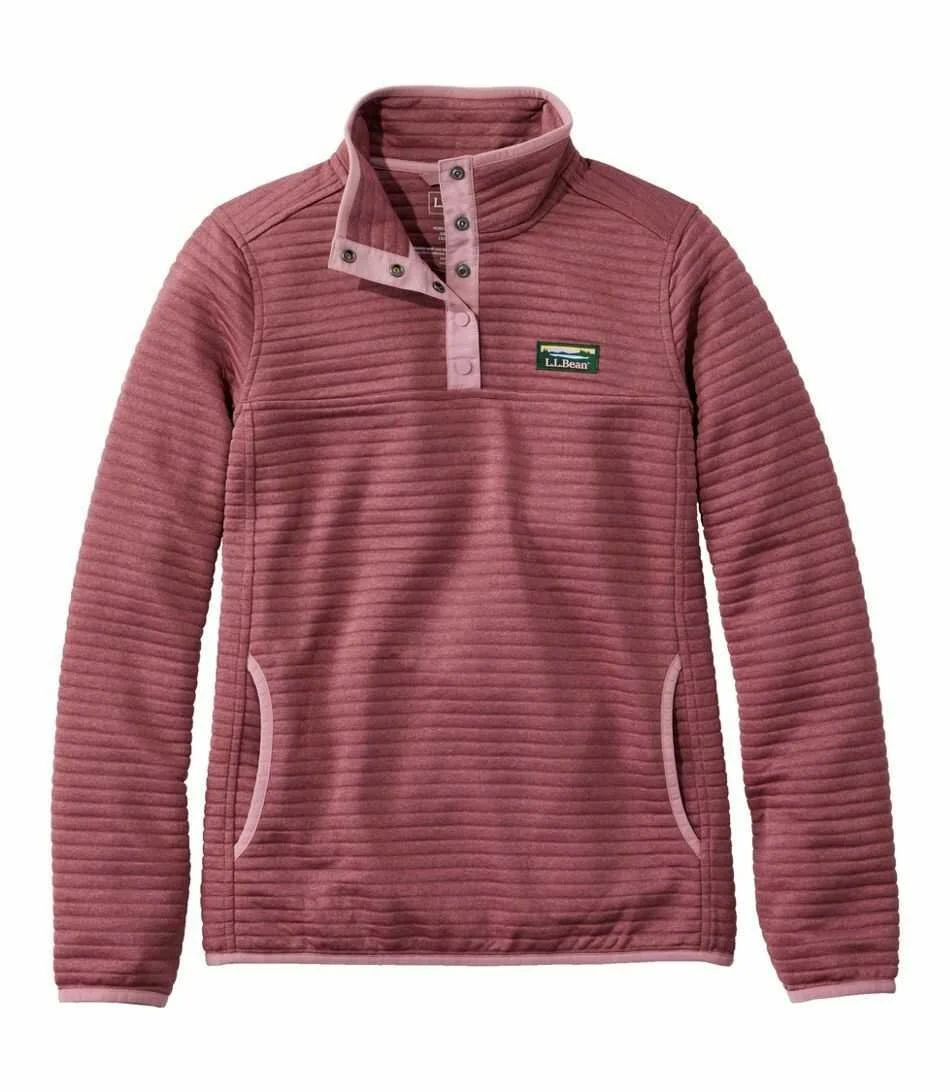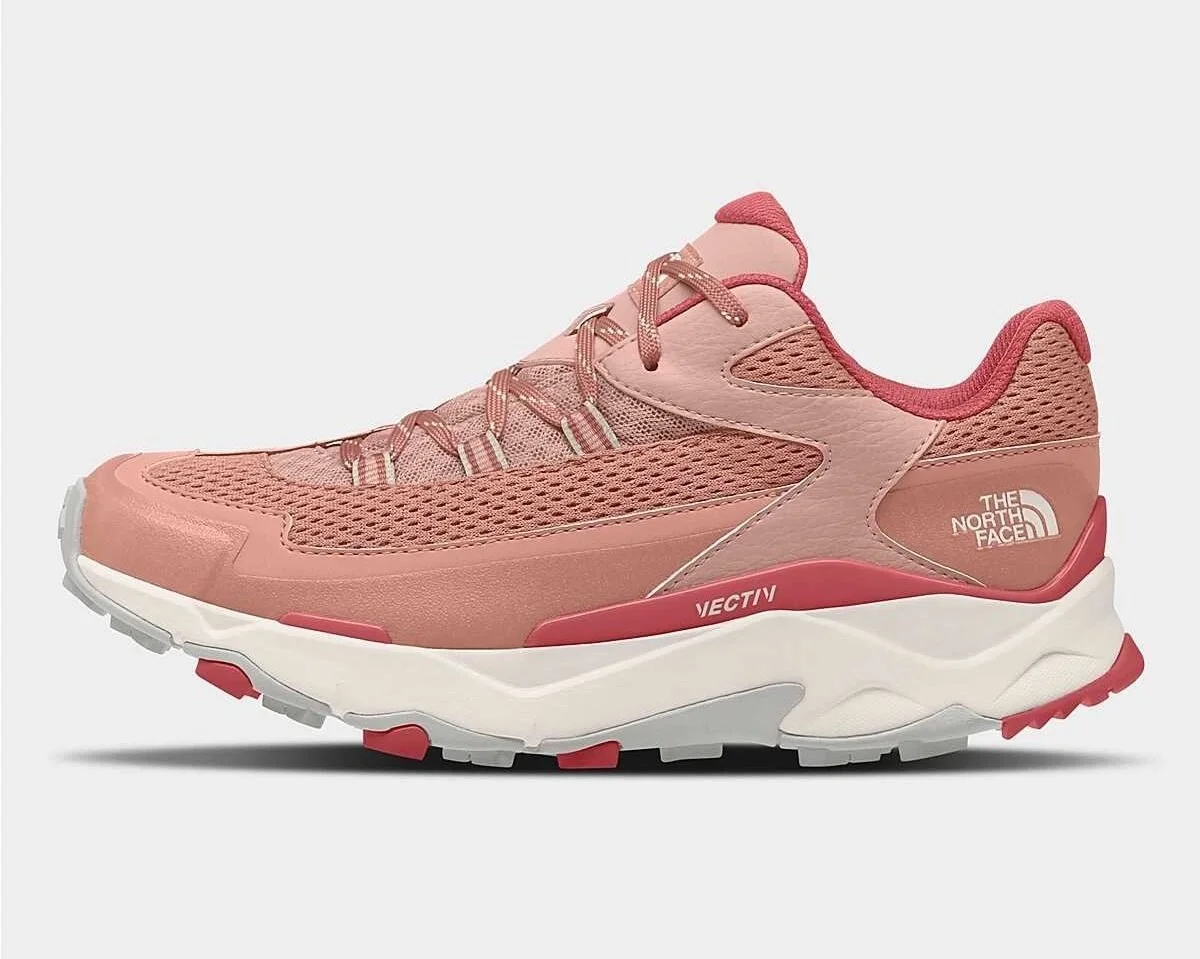13 Hidden Secret Spots in Joshua Tree National Park
The Joshua Tree National Park is a 774,000-acre preserve with a rich history and flourishing natural scene with wildlife and plant-life. To those of us who enjoy exploring the great outdoors, this super unique Southern California desert park is the perfect playground. Visitors can enjoy hiking and camping, with the levels ranging from very leisurely to extra challenging.
Joshua Tree is the meeting place of two deserts, the Colorado Desert and the higher and cooler Mojave Desert. Each area has its own distinct ecosystem with diverse territory. The Mohave Desert is the only place on earth where the Joshua tree grows.
If you’re a shutterbug like me, you’ll understand how I love to photograph as I explore. This guide is full of areas to discover in Joshua Tree, some of them are much lesser known and you won’t find a lot of crowds, especially during the peak seasons. I also include all kinds of photography inspiration such as blooming wildflowers and excellent lookout spots with panoramic views of the desert landscape.
Top 13 Photography Secret Spots in Joshua Tree
Wonderland of Rocks
We took our photos here, next to Skull Rock. These round and bulbous rocks where formed by glaciers long ago and make for some great photos. They are fairly close to the main road and easy to climb. There’s so many crooks and pathways you can find for a unique photo. It’s also easy to walk to some desert area where the Joshua Trees are growing.
Desert Flowers in Joshua Tree
If you’re planning on visiting dessert blooms, it’s important to know their relationship with the rainy season. Dessert flowers only bloom after the winter rains. If there isn’t enough rain, they save their water and wait for the next year to bloom. The blooming season can begin as early as February but it’s mostly in early spring which falls around March and April. Be sure to check the blooming conditions before you head out.
Colorful Dessert Flowers in Joshua Tree
Chia Flower - Spinky pink flower grows on a long stalk.
Notch-leaved Phacelia - Small purple flowers are also called scorpionweed.
Dessert Mariposa Lily - Orange Flower that resembles the California Poppy.
Desert Dandelion - Pretty yellow flower with a red center closes up at night.
Joshua Tree Flowers
We all know about the funky looking Joshua Trees (which are actually not trees at all), but not everyone knows that they bloom with white clusters of flowers. They don’t bloom every year so it’s extra special if you’re able to catch it and the perfect time. If they do bloom, it will be sometime in the spring, but only if there’s been enough rain in the winter.
Quail Mountain Trail
The tallest mountain in the park and you must be an experienced hiker to reach the top. There are no developed trails on Quail so I don’t recommend it to anyone unless you’re real Gung-ho for adventure. But you can definitely photograph it from some great view points.
Ryan Mountain
The second tallest mountain in the park and visitors can trek to the top without too much difficulty. The hike to the top is about 1.5 miles. The views from the top of Ryan Mountain are amazing!
Sunset Skies in Joshua Tree
Joshua Tree has the best sunset skies and you can actually see the stars at night. The colors are so clearly defined and come out beautifully in photos.
Lost Horse Mine
Long ago miners arrived in the park in the 1800s. If you’re into ghost towns, there are nearly 300 abandoned gold and silver mines in Joshua Tree Park (see our adventures at the Ghost Town Bodie!).
To get to Lost Horse Mine, it’s a gradual 4 mile trail and a great opportunity to see some wildflowers during the right season. If you continue another mile down the trail, there’s a great overlook spot as well. Full disclosure, the mine is blocked off so you have to admire it from a distance and get creative with your camera.
To get to the trailhead: From Park Boulevard, take Keys View Road south 2.4 miles and turn left onto a dirt road leading to the trailhead for Lost Horse Mine. There’s no permit required for this trail, yay!
Cholla Cactus Garden
Teddy Bear Cholla Cactus grows here and in my opinion is one of the most photogenic areas of the park. It is one of the signature sights of Joshua Tree. The hike is only a quarter mile and leads you straight into a beautiful lush garden of these adorable cacti. The trailhead access is at Pinto Basin Road on the way to Cottonwood Springs. From Park Boulevard, take Pinto Basin Road for 12 miles. The Cactus Garden is on the south side of the road.
Springs and Water Oases in Joshua Tree
You don’t usually think of bodies of water in the desert but actually there are five water oases in Joshua Tree Park and few springs too. I could write an entire blog post on just these gems but I will just give you some highlights for now.
The most popular spring is Cottonwood Spring which surprisingly has lush green palm trees. This trail is quick and easy, perfect if you only have a few hours. Although it's not an ambitious trail, there are still some great photo opportunities along the way.
Fortynine Palms Oasis
Fortynine Palms Oasis is much more secluded with a 3 mile roundtrip hike to find it. The trailhead is located away from the main road which makes it much less frequented. To get to the trailhead from inside the park, exit the north entrance and make a left on Route 62. Drive 5 miles through the city of Twentynine Palms and turn south on Canyon Road. Drive 1.7 miles to the parking lot at road’s end.
Update for 2022: The Fortynine Palms Oasis has been temporarily closed due to extreme drought conditions. They currently do not allow park visitors in this area so that the wildlife can drink water without human disturbances.
Colorado Desert in Joshua Tree
The main reasons for the divide between the Colorado and Mojave desert are based on climate, elevation, and the types of plants that thrive in each area. From a photography standpoint, the Mojave Desert usually gets all the love.
But the Colorado Desert actually has some of the best colorful blooming flowers which are great in photos.
Some of the best flowers only found in the Colorado Desert are:
Desert ironwood - A beautiful blooming tree with pink/purple blossoms.
Ocotillo (Fouquieria splendens) - This super tall succulent-looking plant has red flowers at the end and totally make for awesome portrait photos (aka selfies!).
Desert Lavender - This plant looks very similar to traditional lavender, but found in the desert.
Agave Deserti - Mostly known as a common houseplant, these beauties are even better in the wild. They grow super tall stalks with yellow flowers, great fro photos.
Other Trees - We all know about the Joshua Trees but within the park there’s also has piñon, pine, juniper, and live oak trees. Juniper trees are especially photogenic because they have dramatic twisted trunks which totally add drama to a photograph.
Joshua Tree Wildlife
If you want to try your hand at wildlife photography, species that live inside the park include birds, bighorn sheep, snakes, and lizards.
Joshua Tree Winter Snow Scene
The park is often closed when there’s snow but if you get the opportunity to photograph the desert after some fresh snow has fallen, it’s so beautiful!
Staying inside an Airstream in the Joshua Tree desert is wanderlust goals. AutoCamp has made renting out newly renovated Airstreams super easy, with all the amenities included. Not to mention patios and fire pits to make s’mores!
At Sacred Sands you can enjoy scenic desert views from your own private outdoor soaking tub. The modern decor is carefully curated with cool discoveries such as record players and outdoor showers.
I’m sure by now you’ve heard that tiny living is all the rage. You can book this modern and chic tiny house inside a converted shipping container in Joshua Tree.
Every outdoor adventurer needs a sturdy yet lightweight backpack to carry all the essentials for hiking and exploring around Joshua Tree Park.
The temperatures can really fluctuate in the dessert and packing comfortable layers is very important. L.L. Bean makes stylish and functional outdoor clothing and gear.
Whether you plan to hike some of the easier trails in Joshua Tree or take on a tough mountain trail, you’ll need the proper foot gear to prevent blister and fatigue. The North Face has an excellent selection of hiking shoes and boots for men and women.

